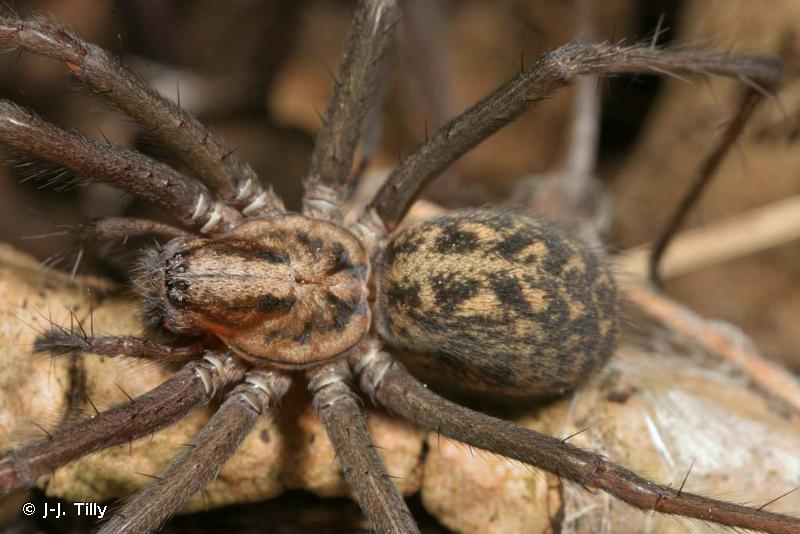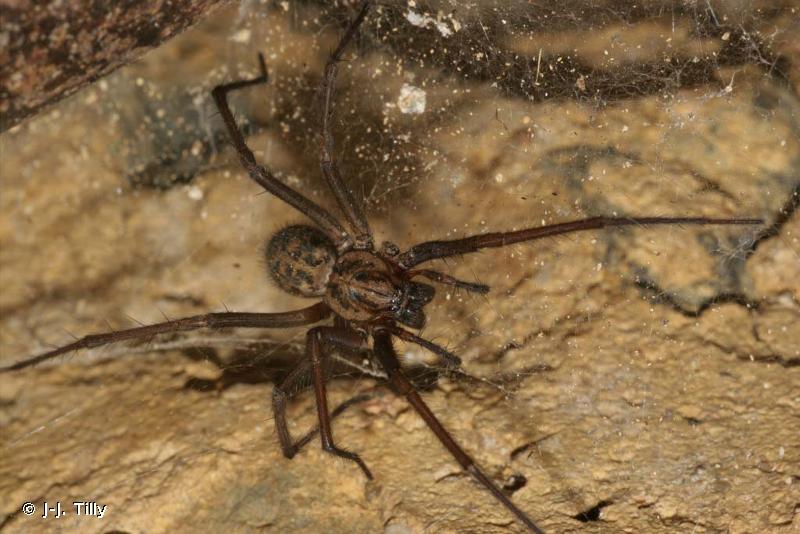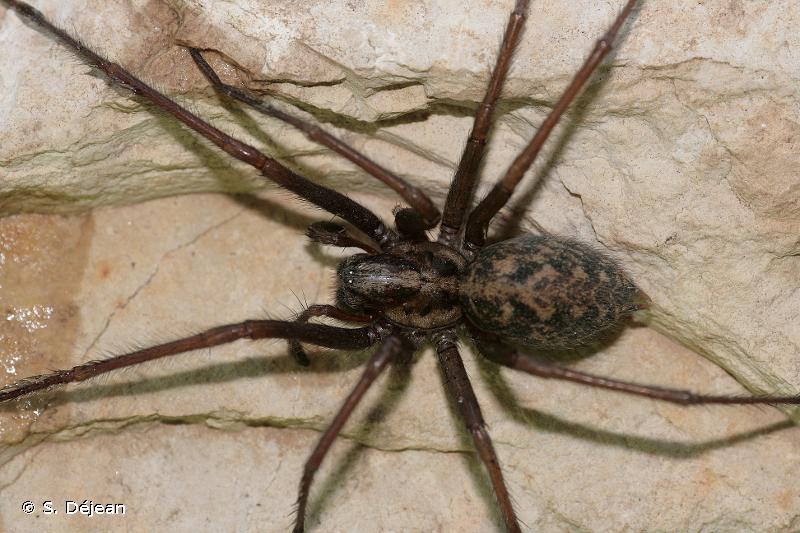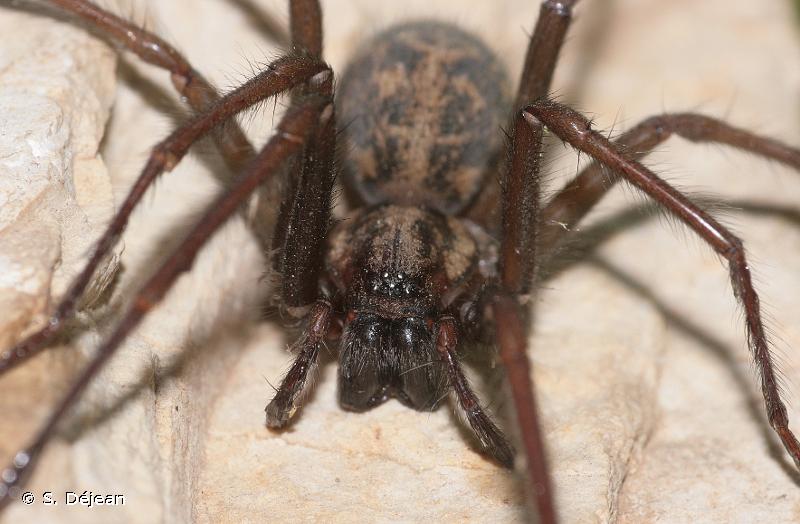
cd_nom

| Author : S. Déjean |
 |
To get the picture, please visit:
Sylvain Déjean
Biodiversité et gestion des territoires
Université de Rennes 1
SPN, Av du Gal leclerc
30042 Rennes Cedex
email: alain.canard@univ-rennes1.fr
Legend: Gte Saurat
Any reuse of one or more photographs on this site is subject to an authorization request from the author.
Link to the Code of Intellectual Property (Legifrance)

| Author : J-J. Tilly |
 |
To get the picture, please visit:
Jean-Jacques Tilly
Association française d'Arachnologie
http://asfra.fr/Site/Main_public.html
email : inpn@mnhn.fr
Any reuse of one or more photographs on this site is subject to an authorization request from the author.
Link to the Code of Intellectual Property (Legifrance)

| Author : J-J. Tilly |
 |
To get the picture, please visit:
Jean-Jacques Tilly
Association française d'Arachnologie
http://asfra.fr/Site/Main_public.html
email : inpn@mnhn.fr
Any reuse of one or more photographs on this site is subject to an authorization request from the author.
Link to the Code of Intellectual Property (Legifrance)

| Author : S. Déjean |
 |
To get the picture, please visit:
Despite the Creative Commons license, please inform the author of the use which will be made of his photo

| Author : S. Déjean |
 |
To get the picture, please visit:
Despite the Creative Commons license, please inform the author of the use which will be made of his photo
Distribution mondiale
toute l'Europe, Bassin méditerranéen
Caractères distinctifs, espèces
Taille - femelle : 10-14 mm, mâle : 11-16 mm.
C'est une grande espèce aux pattes, sombres, velues et longues, chez le mâle encore plus que chez la femelle. Sa couleur générale est brunâtre avec deux bandes claires sur les côtés du céphalothorax et un abdomen brun à taches claires en séries. La systématique de ce groupe, à l'origine deTegenaria, a été revu récemment et en a été complètement remaniée (regroupement des espèces : atrica, saeva, duellica, nervosa,etgigantea) . Il faudra donc un peu de temps avant de discerner les biologies respectives. On distingue maintenant en France, deux Aterigena, 5 Eratigena et 17 Tegenaria. Eratigena atrica est avec Tegenaria ferruginea une grande espèce que l'on rencontre souvent dans les habitations et qu'il ne faut pas confondre avec une espèce beaucoup plus petite, Tegenaria domestica.
Milieux colonisés
Si l'espèce colonise des milieux naturels : rochers ou troncs au sol, elle est surtout connue de milieux construits par l'homme.
Chasse
L'espèce tisse une toile nappe non collante qui prolonge une retraite tubulaire cachée dans la végétation, dans un trou de mur, derrière un meuble. Les individus se déplacent sur la toile, c'est là qu'ils viennent capturer les proies qui se sont hasardées sur la nappe. Elles sont saisies et consommées dans la retraite.
Développement, cycle
Les femelles adultes sont trouvées toute l'année, plus abondantes de septembre à décembre, les mâles sont présents de août à octobre. Le cycle dure deux ans.
L'araignée effectue ses mues dans sa retraite. Le mâle recherche souvent une femelle immature, vit avec elle jusqu'à sa mue de maturité, puis la féconde ensuite, plusieurs fois. La ponte, de 40 à 60 œufs, n'est déposée dans la retraite qu'au printemps suivant.
A. Canard(Université de Rennes/Service du Patrimoine Naturel, MNHN),2014
Continental
Metropolitan France
Overseas
Marine
Metropolitan France
Overseas
The map presents a summary at the 10 x 10 km grid of the observation data for the species transmitted to the SINP. These data have been subjected to validation filters.
The map presents a reference distribution layer of the species at the scale of departments and marine sectors. The presence and absence data were established by expertise within a network of partners. This reference distribution is used in the validation process of the SINP data at the INPN level.
Corresponds to a report on the basis of at least one observation proved within a period of 10 years (20 years for little-known invertebrates) preceding the year and no presumption of extinction since obtaining the last data nor doubt on reproductive and implemented nature of this population. For migratory species, the presence indicated concerns areas of reproduction.
This status is based on one or more of the following criteria:
This point covers the absence, more difficult by nature to demonstrate than presence. This status is based on one or more of the following criteria:
This status must be assigned to a department in which the presence of the species is casual.
Particular case of absence due to a proven extinction less than a half century ago (older disappearances are treated as "no probable or definite").
In the state of knowledge, we can not comment on the presence or absence in the current department. This is the default status when not comprised in one of the previous categories or whenever there is doubt.
The map shows the global distribution of the species based on GBIF data (Global Biodiversity Information Facility).
